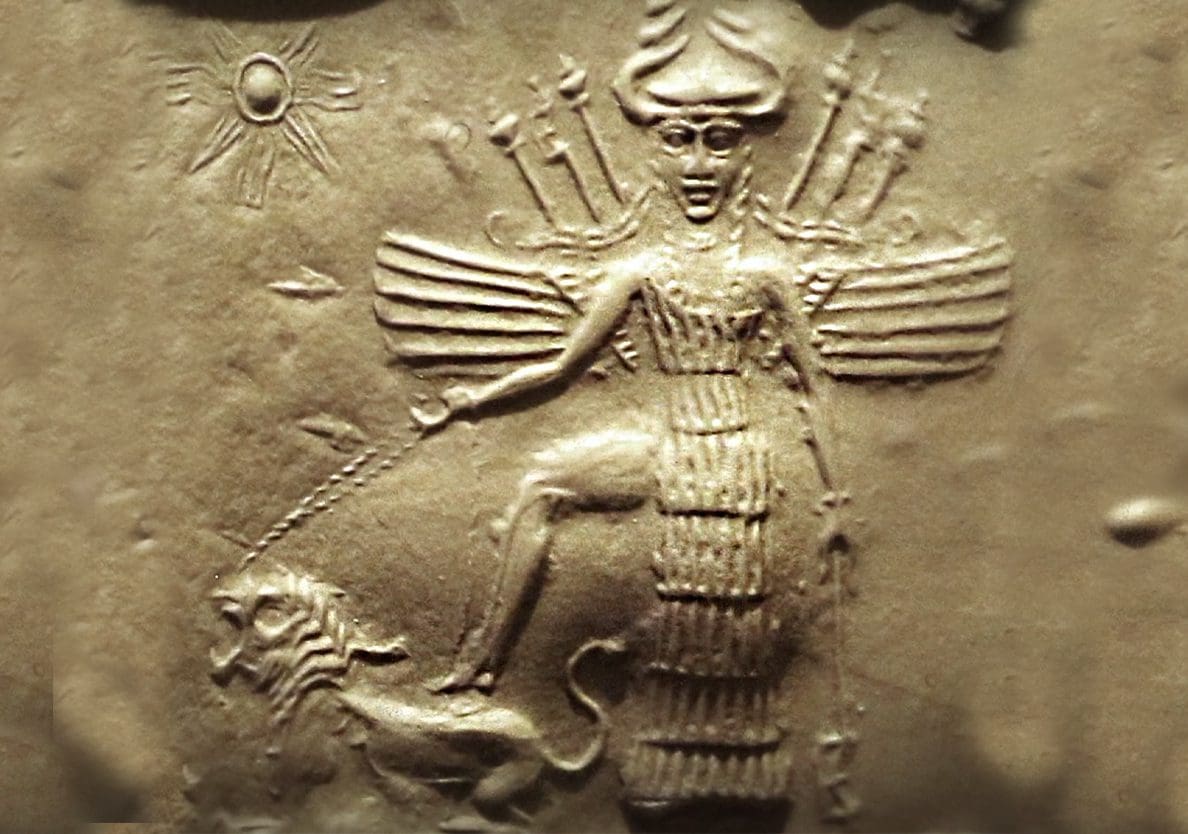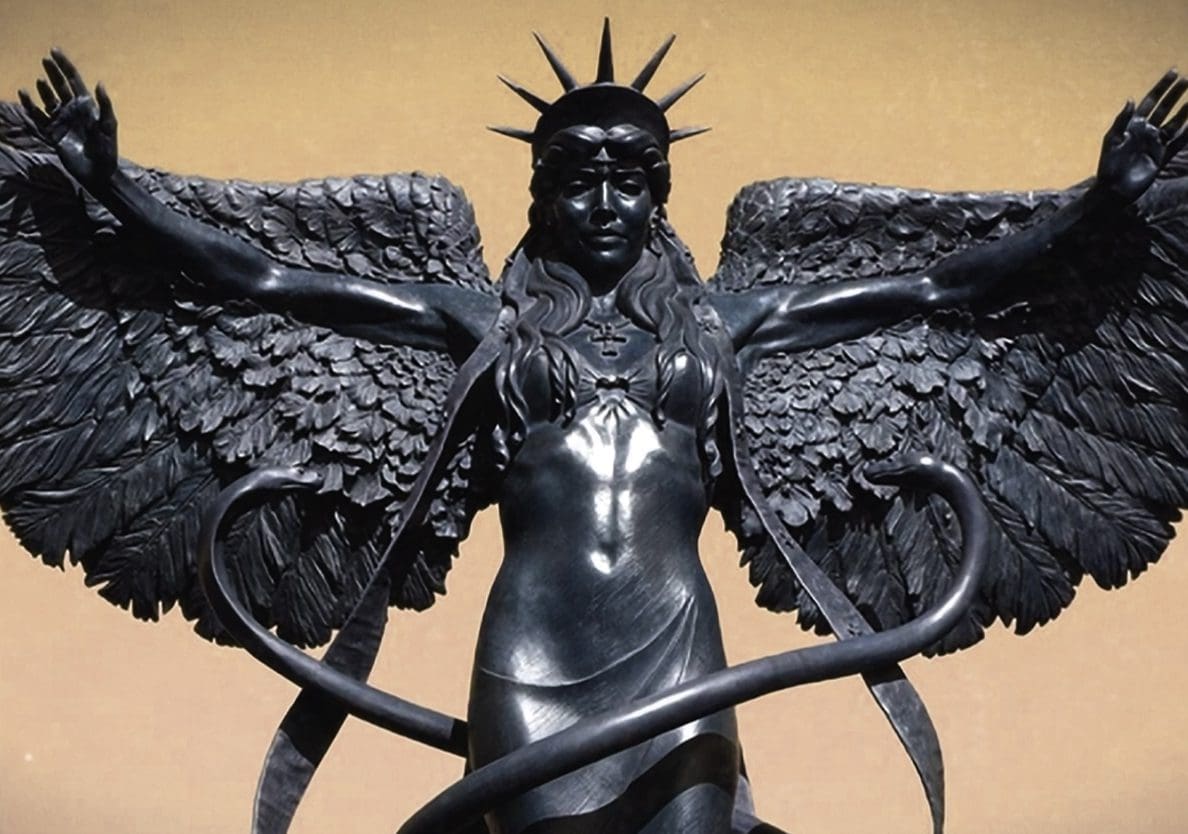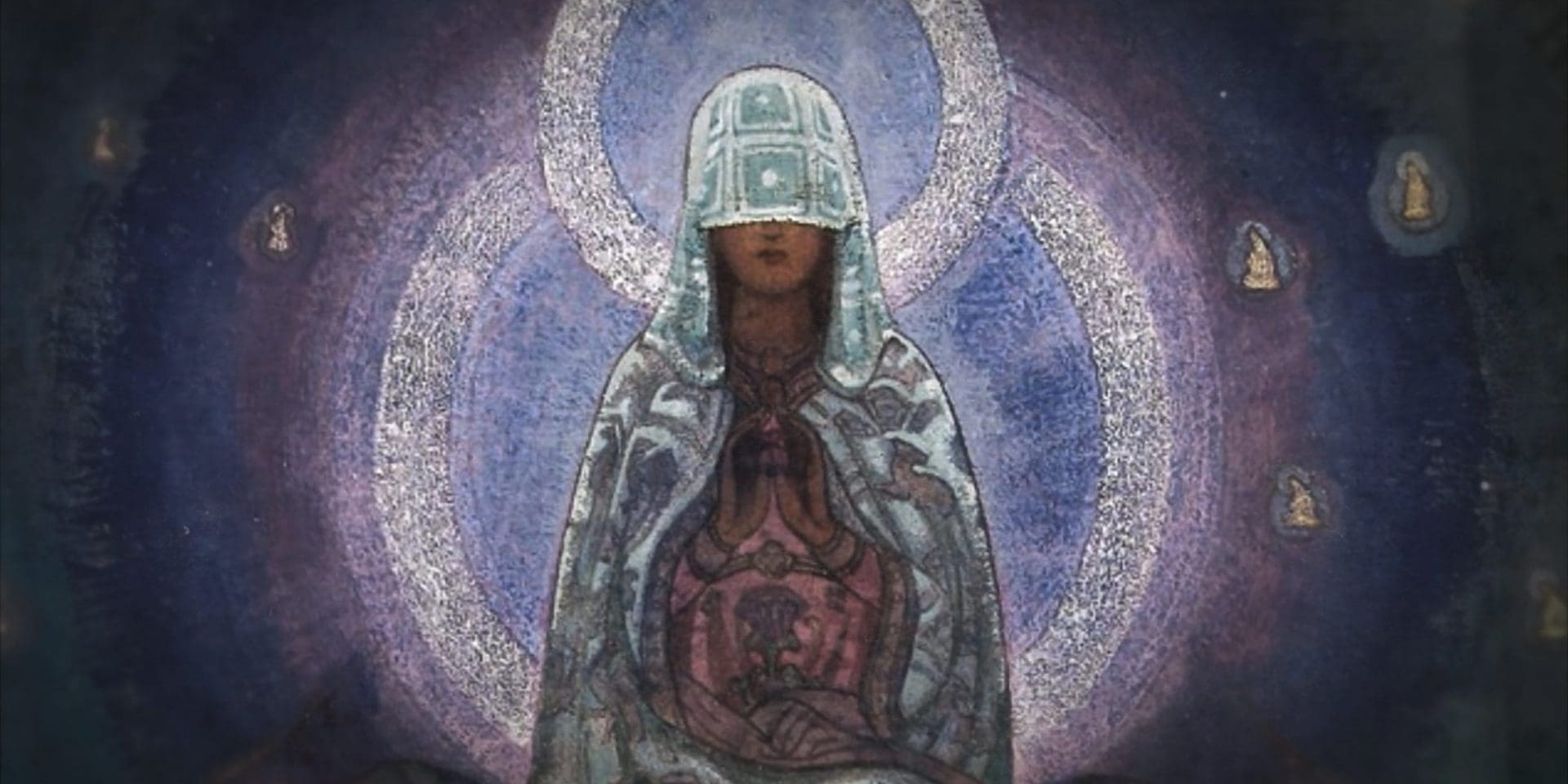The queen of heaven is a title that occurs only five times in the entire Bible, and it is found exclusively in the book of Jeremiah (7:18; 44:17, 18, 19, 25). In all of these passages, Jeremiah is upbraiding the people of Judah for worshipping her rather than the true God. In fact, entire families, even children, participated in these worship rituals. Not only did worship of her include cult prostitution but the Judean women even dared to make cakes stamped with her image as offerings.[1]
While it is impossible to identify this false goddess with absolute certainty, some scholars contend that the best candidate is Ishtar. Called the “lady of heaven”, she was the Assyro-Babylonian goddess of love, fertility (sexuality), and war. This is Scripturally and historically possible because, as one scholar points out, “there certainly was Mesopotamian influence in the worship practices of Judah, particularly from the time of King Ahaz until the reign of King Zedekiah.”[2] In fact, even after this time we find in the book of Ezekiel Jewish women at the temple of God worshipping and mourning for Ishtar’s lover Tammuz, the god of vegetation. Additionally, “The Hebrew word for the cakes that the women made (Jer. 7:18) seems to come from an Accadian word referring to a sweet pastry which was offered to the Mesopotamian goddess Ishtar.”[3] Indeed, archaeological discoveries provide considerable evidence that the Babylonians did use such cakes in the worship of this goddess. Apparently, “These cakes were baked over an open fire, not in an oven. A number of clay molds for cakes from the second millennium BC have been discovered in a palace kitchen at Mari. Some have a female shape and others are star-shaped. Presumably both are representative of a female goddess.” [4] Still, identifying this goddess isn’t so clear cut.
“The only reference to ‘Queen of heaven’ outside the Bible is in a 6th-century B.C. Letter found at Hermopolis in Egypt.”
Other possible identifications for this false deity include Canaanite goddesses such as Anath and Asherah (the latter of whom is worshipped in Israel according to archaeological discoveries). This confusion over her name is not surprising considering that as “Lady of the lands” she was revered throughout the ancient Near East and was called by various names depending on the region. For example, “She was identified with Isis (Egypt), the male deity ’Attar (S Arabia), Astarte (Greece) and Anat (Syria).”[5] In fact, one scholar points out that “The only reference to ‘Queen of heaven’ outside the Bible is in a 6th-century B.C. Letter found at Hermopolis in Egypt; there Anath is given the title.”[6]
While this false deity certainly seems to have had many different names, this goddess always appears to be connected with the heavenly bodies, and specifically the moon. As a matter of fact, the original language itself seems to suggest this as the Hebrew word used in the Masoretic Text (מְלֶ֣כֶת) isn’t the normal word for queen (מַלְכָּה, H4893). Others, including the translators of the Septuagint, understood this word to mean “handiwork.” Thus, the queen of heaven would be “the army of heaven.” Similarly, the Aramaic Targum translates this title as simply “stars.”[7] Several Bible commentators also identify the queen of heaven with the moon, including the renowned Bible scholar Matthew Henry. “The worshipping of the moon,” he says, “was much in use among the heathen nations, Jer. 44:17, 19.” We call to mind here Abraham’s own father Terah (See Joshua 24:2).[8] In fact, “The whole celestial globe with all its ornaments and powers was the object of their adoration.”[9]


Sadly, in direct violation of God’s commands His people worshipped the host of heaven rather than the LORD of hosts. Believe it or not, even today, this same sort of false worship is going on. As scholar Paula Rinehart notes, “In recent times, a renewed interest in paganism has arisen among many women. Focus has been placed upon such ancient goddesses as Gaia, the earth goddess, and Sophia, the goddess of wisdom. Some women’s organizations, even within the Church, are introducing women to goddesses and pagan elements of worship and theology.”[10] This is a sobering reminder that Christians must guard their hearts and minds against these influences. Just like the ancient Israelites, people think that these so-called gods and goddesses can offer them good things. But as the one true God reminds His people in Scripture, every good thing comes exclusively from Him (James 1:17). These false gods cannot save us. Only the Living God, the Lord Jesus Christ can. Therefore, we must worship and focus on Him and Him alone.

Ryan Hembree is a daily co-host, speaker, and writer of Bible Discovery. He also hosts a YouTube channel that shows the unity of the Bible and how science and Scripture fit together. Ryan also has an honorary Masters of Ministry in Creation Science from Phoenix University of Theology.
[1] NIV Biblical Theology Study Bible, Jeremiah 7:18.
[2] NIV Cultural Backgrounds Study Bible, Jeremiah 7:18.
[3] NKJV Chronological Study Bible Notes, Family Worship of the queen of heaven.
[4] NIV Cultural Backgrounds Study Bible, Jeremiah 7:18.
[5] Encyclopedia of the Bible, Ishtar.
[6] NKJV Chronological Study Bible Notes.
[7] Encyclopedia of the Bible, Queen of Heaven.
[8] A study of the name meanings of Terah and his family clearly reveal the influence of the moon god Sin.
[9] Matthew Henry’s Commentary, Verses 16-20.
[10] The Woman’s Study Bible: New King James Version (pg.1115). Patterson, Dorothy Kelly., editor. Thomas Nelson, 1995.






